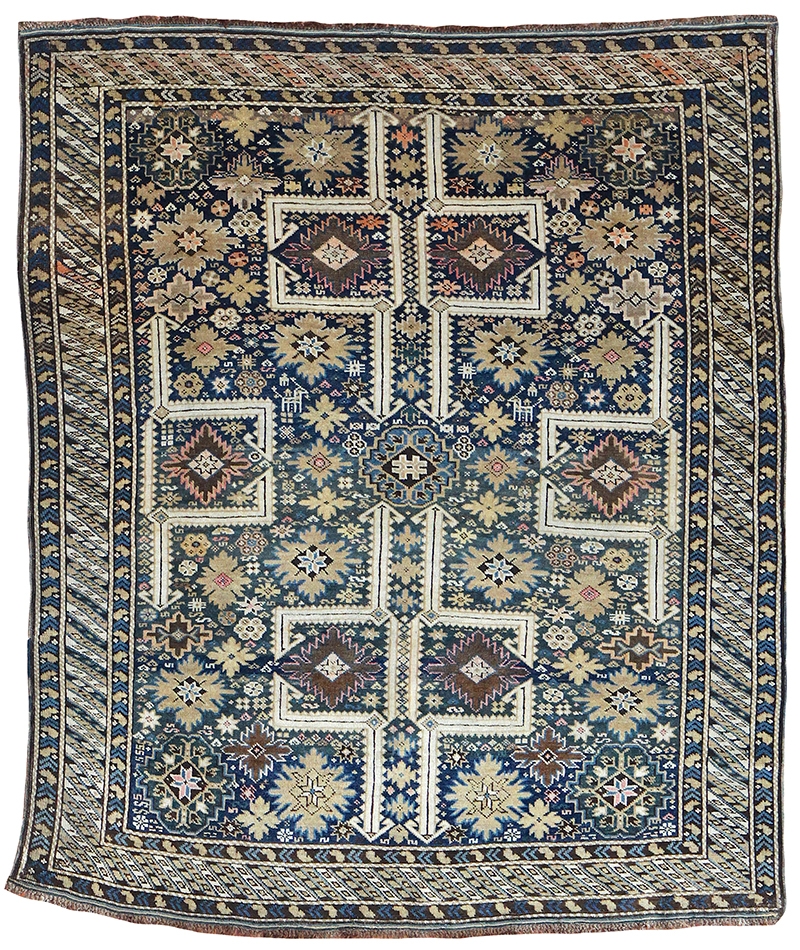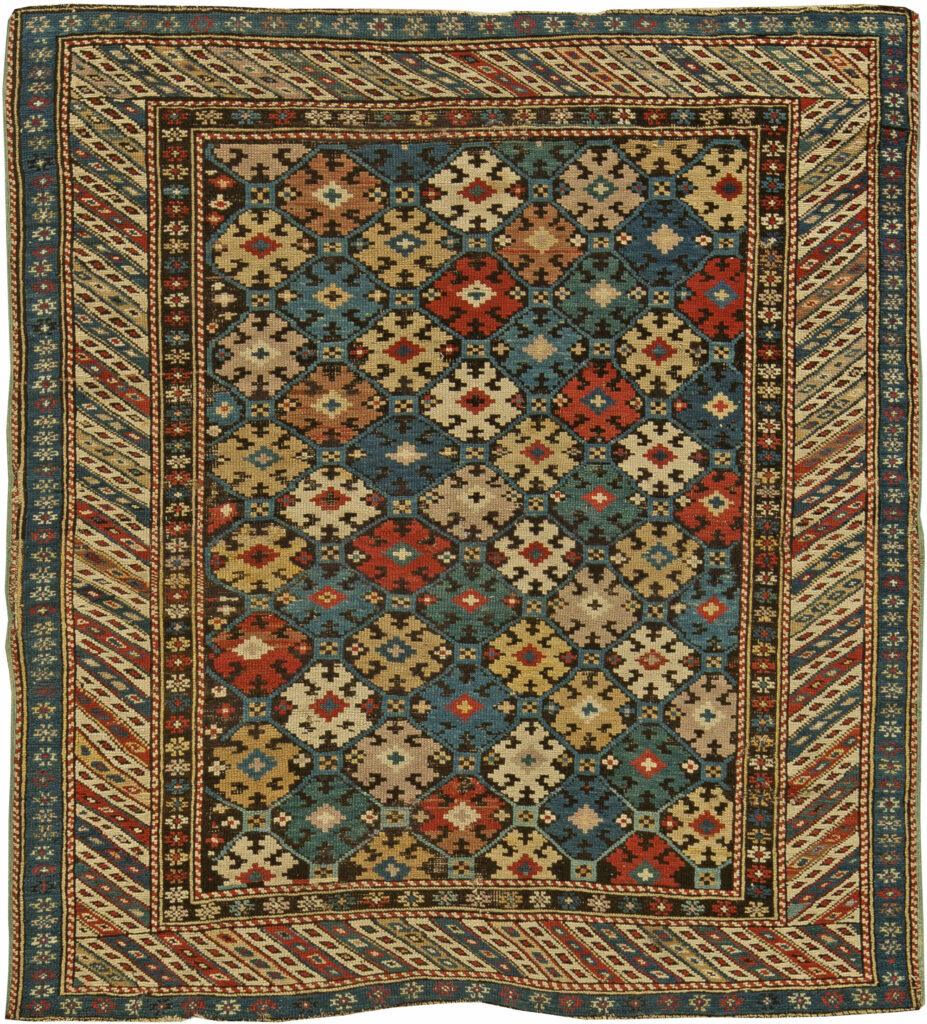Kuba

Kuba Gallery, 1870
Kuba (Quba or Guba) is a district located in the northwest Caucasus, north of present-day Azerbaijan. A fertile area, Kuba has always been densely populated and cultivated. The region consists primarily of hills, with little coastal margin. The inhabitants are not nomads and live in spacious residences. Kuba, through its 27 carpet-producing villages, has always occupied a leading position in both quantity and quality of carpet production. The area is inhabited by ethnic groups known as Lesghis, Iranian Tats, Turkish Azeris and Armenians. Kuba villages give their own names to the carpets they produce: Alpan Kuba, Perpedil, Konakend, Karagashli, Zeikhour (Seychour), Zeiva and Chichi – each recognized for its unique production, stylized design and quality in carpet production.
Rugs from the Kuba region have a short pile that is not very soft to the touch. The fabric is dense and resistant and the design is charming. Most Kuba rugs are made in small rectangular and square sizes, although more elongated rugs are also made. The threads are wool, but exceptionally cotton is used in the wefts and side finishes. The motifs form a relatively uniform geometric composition. Contrast is not a common element. The finely spun yarns are dyed in a wide range of colors, the most common being blue. In total, the carpets produced in the many villages of Kuba feature more than thirty different geometric patterns, most of them well known.
The rugs have an asymmetrical knot and are made with undyed warps of three or four layers, generally white, left as fringes at the ends. The rugs are double-weaved and the warps are partially, or sometimes completely, hidden. The sides are normally anchored by bundles of four warps, wrapped with the weft or with a separate three- or four-ply thread.
Kuba rug designs vary depending on the village in which the piece was made. Basically, Perpedil’s main feature is a row of ram’s horns that extend across the navy blue field of the carpet. The Seychour have a design that resembles two crossed beams in the shape of a cross, called St. Andrews in the international carpet market, arranged on a field of blue or light in tone like sand, for example.
What characterizes Chichi rugs are the flower or star motifs lined up on the blue field. The edge of the Chichi rug has a classic flower design interspersed with slanted bars. The Karagashili have the design of a stylized palm tree from which lilies or arabesques sprout that resemble a bird sitting with four large stars around it. The design of Zeiva rugs often features one or multiple medallions on the blue field and Konaghend employs a variety of medallion styles based on the design of the other Kuba villages.
Kuba rugs often feature abstract floral figures or geometric figures, such as the design known as the dragon. Kuba artists were influenced by Shah Abbas design along with other designs from the Caucasus region and created the fantastic Afshan semi-geometric patterns that feature rose windows, stars, angular arabesques and stylized crabs.

Kuba Afshan, 1900

Generally, the Kuba rug design has a larger geometric motif that is surrounded by lilies, tulips or other flowers, birds and other animals. Kuba artists innovated by using the Shah Abbas design on the navy blue field of the carpet instead of the red field as is the pattern used on Persian carpets.
The Kuba region is globally recognized as one of the largest producers of carpets using natural colors and for the high aesthetic level of color harmony. Art lovers not only place Kuba rugs on the floor but also hang them on the walls of their homes and offices. The exceptional quality, beauty of colors and delicacy of designs from the different ethnic groups making the rugs in Kuba make this product valuable and they remain in high demand in the international rug market.

Figalli Oriental Rugs
We do not sell rugs. We bring rare works of art to your home in the form of rugs.
Our services
You are Protected
Copyright © 2023 Figalli Oriental Rugs, All rights reserved. Desenvolvido por Agência DLB – Agência de Marketing Digital em Porto Alegre
